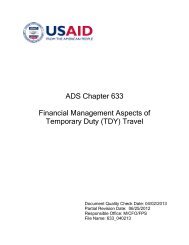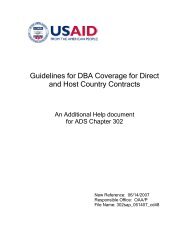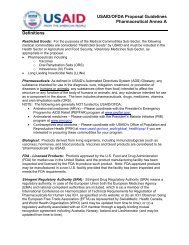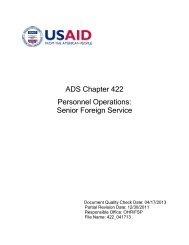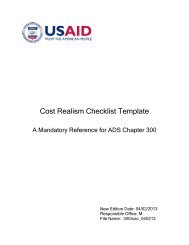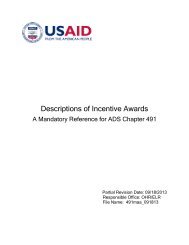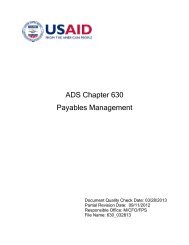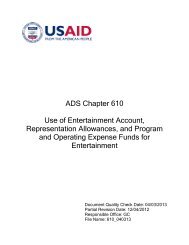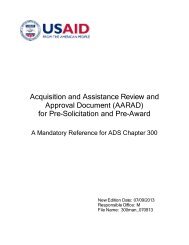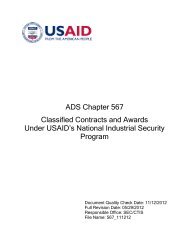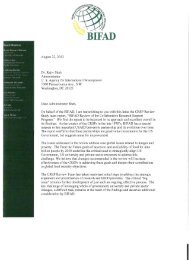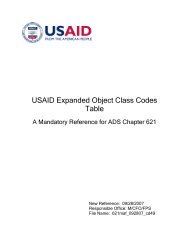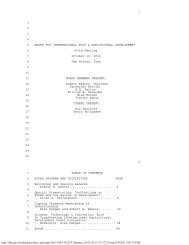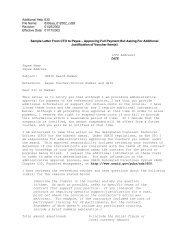USAID Policy Document - Resiliency FINAL 11-26-12.indd
USAID Policy Document - Resiliency FINAL 11-26-12.indd
USAID Policy Document - Resiliency FINAL 11-26-12.indd
- No tags were found...
You also want an ePaper? Increase the reach of your titles
YUMPU automatically turns print PDFs into web optimized ePapers that Google loves.
CASE STUDY: THE HORN OF AFRICA JOINT PLANNING CELLThe human and economic toll of the 20<strong>11</strong> drought in the Horn of Africa was a stark reminder of the consequencesof resource degradation, reduced access to and competition over range land resources, climate change, weak governance,and a history of marginalization and underinvestment in the dry lands. Responses to previous droughts, suchas the Greater Horn of Africa Initiative in the early 1990s, had limited long-term impact. Determined to do businessdifferently, <strong>USAID</strong> established a Horn of Africa Joint Planning Cell (JPC) to identify new ways of utilizing humanitarianand development assistance around the shared aim of building resilience among chronically vulnerable populationsby comprehensively addressing the root causes of their vulnerability and facilitating inclusive economic growth.Source: Neil Thomas/<strong>USAID</strong>A key moment in the JPC’s efforts was the articulation of a shared framework for building resilience in the dry landsof the Horn of Africa between our humanitarian relief and development experts. This framework was based onanalysis and understanding of the dynamics of change in pastoralist livelihood systems. Once agreed to, the possibilitiesfor layering, integrating, and sequencing a wide range of existing humanitarian and development efforts withnew investments around the shared aim of building resilience became clear, and the humanitarian and developmentsides of <strong>USAID</strong> worked in a more coherent and strategic manner than ever before. The very act of humanitarian anddevelopment experts engaging in this type of joint analysis and planning has demonstrated to all involved the powerof bringing together the diverse perspectives, talents, and expertise within the Agency.Doing business differently has already borne fruit. Most notably, humanitarian relief and recovery programs are nolonger conceived of as an end in themselves, but as a foundation and platform upon which new and existing resilienceand development investments must and will build. As an example, <strong>USAID</strong> has strategically layered new resilienceand economic growth investments in Kenya’s arid lands on top of existing World Food Programme Food forAsset programs funded by the Offi ce of Food for Peace and sequenced these investments to build on the successesof the Offi ce of Foreign Disaster Assistance’s (OFDA’s) 3-year Arid Lands Recovery Program. A new arid landshealth program and a jointly funded OFDA and <strong>USAID</strong>/Kenya water program round out the suite of layered, sequenced,and integrated humanitarian and development investments.14



